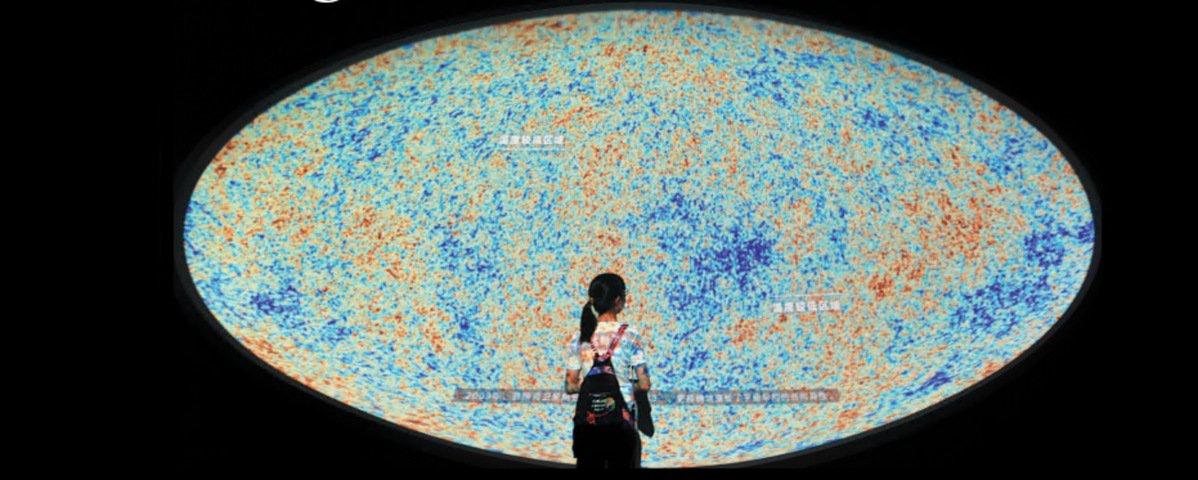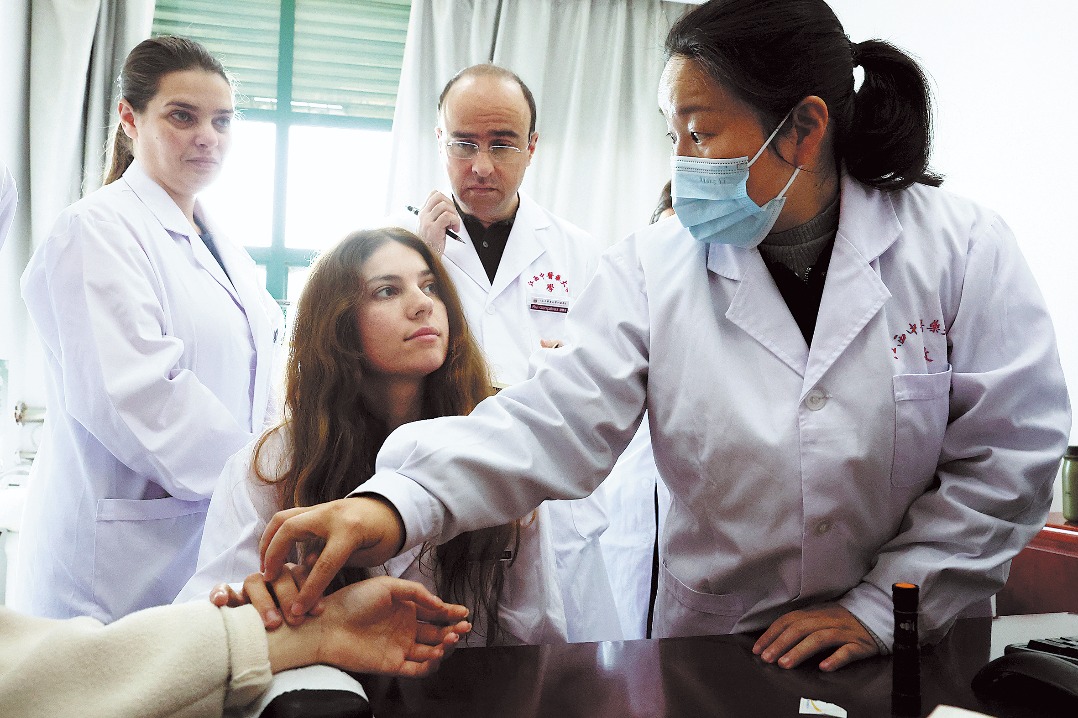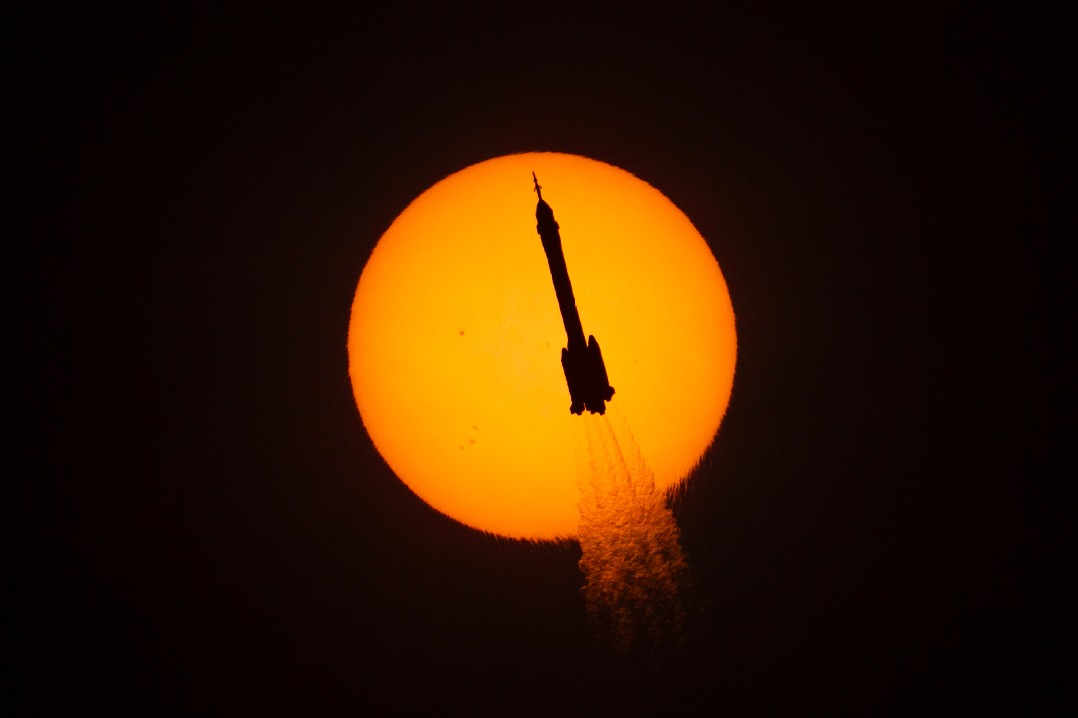New Shanghai museum looks to the heavens


For thousands of years, people have been gazing at the stars, awed by the vastness of the universe.
There has always been the desire to observe and explore the cosmos, and the recent opening of a new astronomy museum in Shanghai has triggered even more curiosity among enthusiastic visitors about the unknown.
On July 18, when it opened to the public, nearly 6,000 people crowded into the 38,000-square-meter Shanghai Astronomy Museum, located beside Dishui Lake in the city's eastern coastal area of Lingang.
Housing exhibits and interactive displays from the history of the creation of the universe to China's latest efforts in space exploration, the new branch of the Shanghai Science and Technology Museum is the largest of its kind in the world dedicated solely to the study of astronomy.
Zhouyang Songdan, a teacher in her 20s who got up at 3 am a week ago to book an opening-day ticket to visit the museum, was among the first to arrive. "I was so excited when I got the ticket, as they were all snapped up in just a few minutes," she said.
Like many people eager to learn about the stars, her love of astronomy was cultivated in childhood when her father read her bedtime stories about the heavenly bodies.
"Back then in Shanghai, there were no astronomy museums and few resources to acquire such knowledge. I think the popularization of astronomy is very important, and this new museum is definitely a good start," she said.
Wang Lianhua, who is in charge of the Shanghai Science and Technology Museum, said the opening of the new institution marks a milestone for the efforts to promote science, as Shanghai now has museums for nature, modern technology and astronomy.
Built on a 56,800-square-meter site, the museum's main building has no straight lines or right angles, a concept inspired by the orbits of celestial bodies and the geometry of the cosmos. Instead, it features three circles-an oculus hole, a spherical theater and an inverted dome, which also function as astronomical instruments, tracking the sun, moon and stars.
The oculus, suspended above the main entrance to the museum, marks the passage of time by tracking a circle of sunlight on the ground across the entry plaza and a reflecting pool. At noon during the summer solstice, a full circle of sunlight aligns with a circular platform in the entry plaza.
The half-sunken theater is located in one wing of the museum with minimal visible support, giving an impression of weightlessness or zero-gravity when visitors approach it.
The inverted glass dome, situated in the central atrium of the other wing, is accessed through a spiral ramp. When visitors reach the center of the glass dish, they have an unimpeded view of the sky.
Thomas Wong, lead designer for the museum and a partner with Ennead Architects, a United States company, said in an interview with CNN that the design was also influenced by the "three-body problem"-the unsolved question of how to calculate the motion of three celestial entities based on their gravitational relationships to one another.
"We thought this problem was interesting because it involves a complex set of orbits," Wong said. "These are relationships that are dynamic, as opposed to a simple circle around the center, and that was part of the (design's) intent-to capture that complexity."
According to the Ennead Architects website, the museum is a celebration of "the continuum of time and space". It is also "modern and forward-looking while at same time presenting a link to the past, mirroring both the rich history of Chinese astronomy and the future ambitions of China's space exploration program."
























